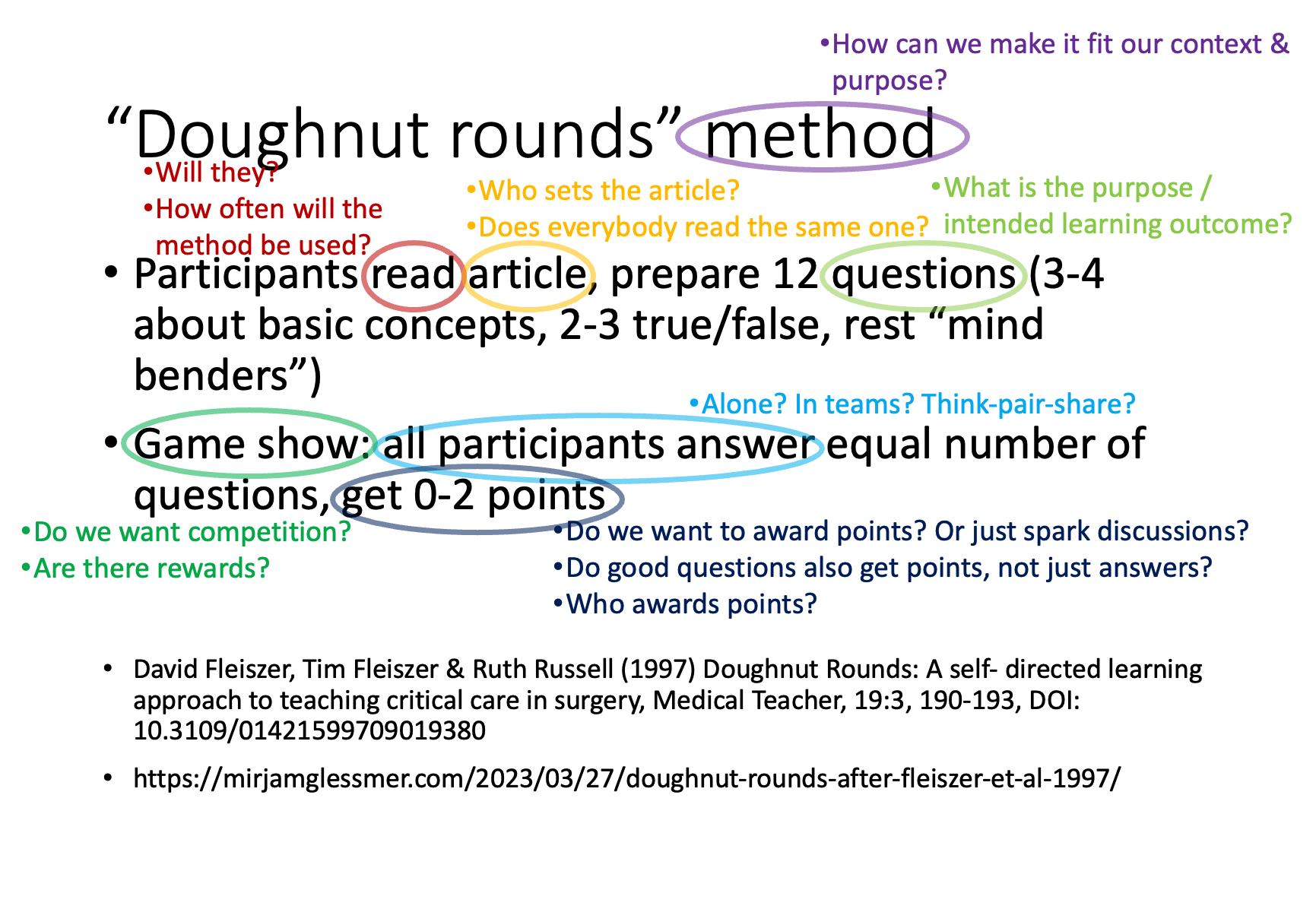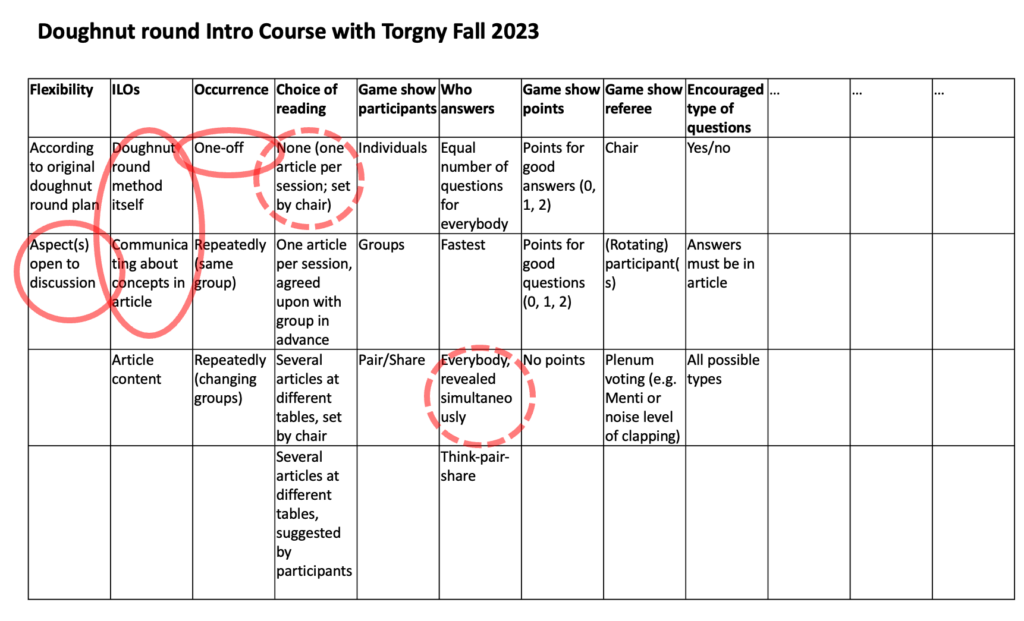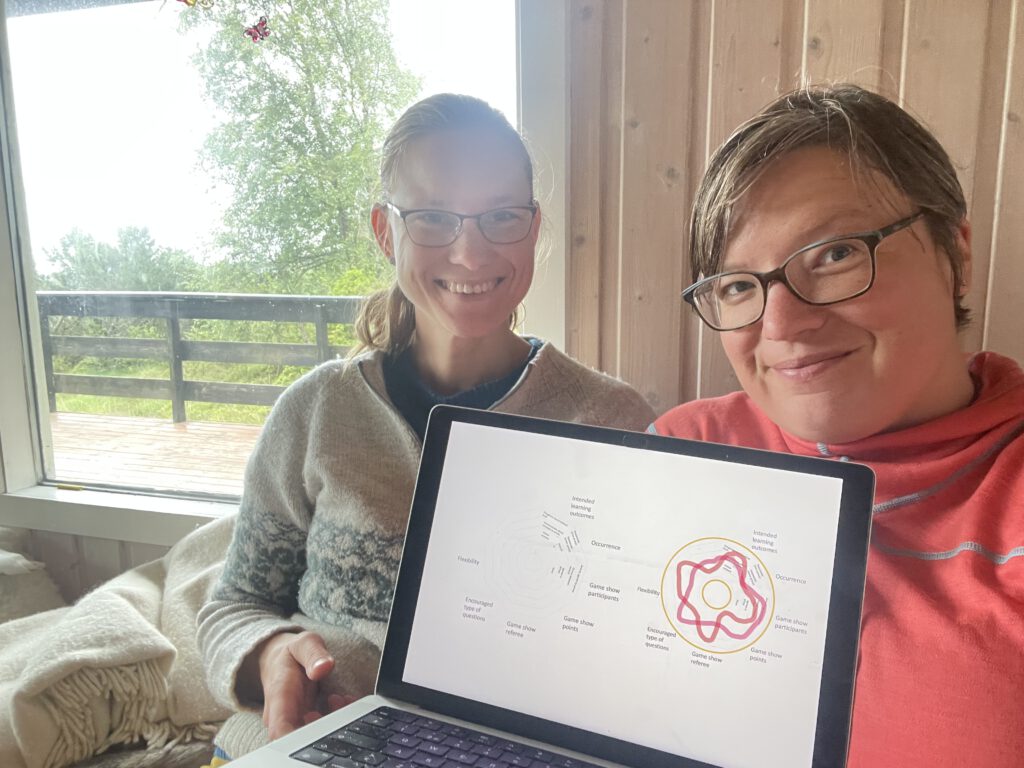
How can we adapt a teaching method for our purposes? The “Doughnut rounds” example
One thing that often surprises me is how seriously many teachers take teaching methods. As in, there must be fixed times for each of the phases of think-pair-share. Or there is an exact percentage of students that must answer a question correctly for a teacher to move on to the next topic. Or that sort of thing. That is NOT how I use methods, and here is my attempt at explaining what I do instead.
Teaching is extremely dependent on context. What works for one teacher with one specific student group and subject might not work again the next year, or for a different teacher, or different student group or subject. Also, the same method can be modified to work for many different purposes! So for me, methods are “more like guidelines anyway”, and you adapt them to whatever you want and think will work best for your context.
Let’s take the Doughnut rounds that I have described before. The way they are described in the original article by Fleiszer et al., 1997, there is a very clear protocol to follow. But to me, that is just one of many possible ways to use this method. I see so many variables that we could play with (see Figure above)! Most obviously, the aspect of the game show. Hate it? Then drop it! Want to make it less stressful? Then let people play in teams. Think that the focus should not only be on answers, but also on questions? Then award points for good questions, too! Want to give participants more agency in the choice of topic? Let them pic the article to read. And so on, and so on.
If we want to look at this systematically, we can put together a table of variables and possible values (for an example, see Figure below. Empty rows & columns indicate that there is probably a lot more to add!). And if you want to give participants more choice, let them co-create how to use the method! That’s what we are planning to do in a course I am teaching next month (see red circles in the table below).
We do want to to give participants flexibility in how we use the method. We want to use the method both to let them experience the method itself, but also to facilitate discussions about what they read. What they are going to read is open to discussion(ish) — we have an article that we suggest participants read, because we want to work with some concepts in it later. But we will share what those concepts are, and if they are motivated enough to find different articles, we welcome that! Also, we suggest that everybody reveals answers simultaneously (the idea being that people think, discuss at their tables, write it on whiteboards, and then reveal, so everybody is involved in the discussion). But also this aspect is open to discussion, maybe they want something else. And then the rest of the variables they can choose together in whatever way they like. See, even practicing some co-creation at the same time!

Ultimately, I want to create a “Doughnut” version of the table, where we wrap the table around as a Doughnut, and mark the implementation we want to go for with “icing”, or possible let participants vote for options by adding sticky dots as “sprinkles”. I think this would be so much fun! Here is a selfie of Kjersti and me with a first sketch of what that Doughnut table could look like, from when we spent a couple of days at a Norwegian cabin during summer, obviously talking about learning and teaching; what else! :-D

David Fleiszer, Tim Fleiszer & Ruth Russell (1997) Doughnut Rounds: A self- directed learning approach to teaching critical care in surgery, Medical Teacher, 19:3, 190-193, DOI: 10.3109/01421599709019380
Our seminar today: "Serious Games in Teaching for Sustainability" - Adventures in Oceanography and Teaching says:
[…] But also depending on culture, some aspects of gamification might work better than others. For our doughnut rounds, for example, the aspect of competition that seems to be very important in a US context, is […]
Recently published: "Adapting a Teaching Method to Fit Purpose and Context" (Glessmer, Bovill & Daae; 2024) - Adventures in Oceanography and Teaching says:
[…] a Teaching Method to Fit Purpose and Context” (Glessmer, Bovill & Daae; 2024), based on this blogpost, but a little more thought through and polished with Cathy and Kjersti in beautiful Voss! Check it […]